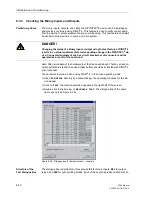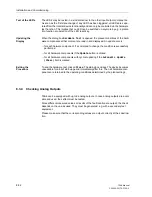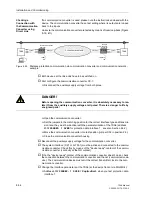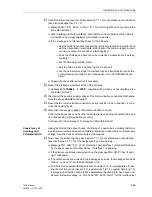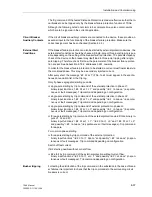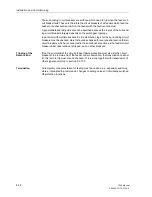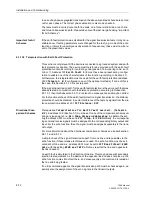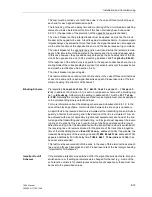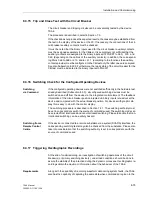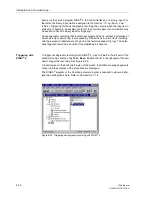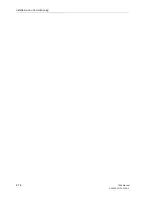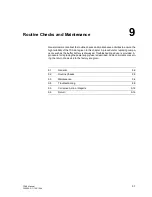
Installation and Commissioning
8-64
7SA6 Manual
C53000-G1176-C156-2
formers (looking from the busbar of the feeder to be checked). Cables are earthed
on the remote end (sealing end).
G
Remove the protective earthing of the line.
G
Connect a circuit breaker to the line end that is to be checked.
G
Check the direction indication (LED if allocated)
G
The faulty phase (FNo
1272
for L1 or
1273
for L2 or
1274
for L3) and the direction
of the line, i.e. “
SensEF Forward
” (FNo
1276
) must be displayed in the earth fault
protocol (see also Section 7.1.1.4).
G
The active and reactive components of the earth current are also displayed. The re-
active current (“
3I0senR=
”, FNo
1220
) is the most relevant for isolated systems,
for resonant-earthed systems it is the active current (“
3I0senA=
”, FNo
1219
). If the
display shows the message “
SensEF Reverse
” (FNo
1277
), either the current or
voltage transformer terminals are swopped in the neutral path. In case the message
“
SensEF undefDir
” (FNo
1278
) appears the earth current may be too low.
G
Deenergize and earth the line.
The check is then finished.
8.3.11 Polarity Check for the Current Measuring Input I
4
If the standard connection of the device is used whereby the current measuring input
I
4
is connected in the star-point of the set of current transformers (refer also to the con-
nection circuit diagram in the Appendix, Figure A-14), then the correct polarity of the
earth current path in general will result automatically.
If however the current I
4
is derived from a separate summation CT (e.g. a core balance
CT) or from a different point of measurement, e.g. transformer star-point current or
earth current of a parallel line, an additional polarity check with this current is neces-
sary.
If the device is provided with the sensitive current measuring input
I
4
and it is connect-
ed to an isolated or resonant-grounded system, the polarity check for
I
4
was already
carried out with the earth fault check according to 8.3.10. Then this Subsection 8.3.11
can be ignored.
Otherwise the test is done with a disconnected trip circuit and primary load current. It
must be noted that during all simulations that do not exactly correspond with situations
that may occur in practice, the non-symmetry of measured values may cause the
measured value monitoring to pick up. This must therefore be ignored during such
tests.
DANGER!
All precautionary measures must be observed when working on the instrument
transformers! Secondary connections of the current transformers must have
been short-circuited before any current lead to the relay is interrupted!
Summary of Contents for siprotec 7SA6
Page 2: ...Siemens Aktiengesellschaft Book No C53000 G1176 C156 2 ...
Page 18: ...xviii 7SA6 Manual C53000 G1176 C156 2 ...
Page 32: ...Introduction 1 14 7SA6 Manual C53000 G1176 C156 2 ...
Page 82: ...Hardware and Connections 2 50 7SA6 Manual C53000 G1176 C156 2 ...
Page 119: ...SIPROTEC 4 Devices 4 25 7SA6 Manual C53000 G1176 C156 2 Figure 4 20 CFC Logic example ...
Page 190: ...Configuration 5 62 7SA6 Manual C53000 G1176 C156 2 ...
Page 652: ...Installation and Commissioning 8 78 7SA6 Manual C53000 G1176 C156 2 ...
Page 724: ...Technical Data 10 56 7SA6 Manual C53000 G1176 C156 ...
Page 800: ...Appendix A 76 7SA6 Manual C53000 G1176 C156 2 ...
Page 866: ...Appendix B 66 7SA6 Manual C53000 G1176 C156 2 ...

